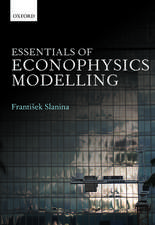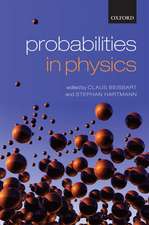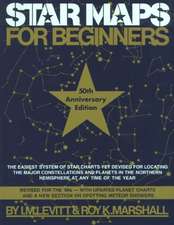Vibrations in Mechanical Systems: Analytical Methods and Applications
Autor Maurice Roseau Traducere de H.L.S. Ordeen Limba Engleză Paperback – 5 oct 2011
Preț: 512.21 lei
Preț vechi: 640.27 lei
-20% Nou
Puncte Express: 768
Preț estimativ în valută:
98.02€ • 101.27$ • 81.54£
98.02€ • 101.27$ • 81.54£
Carte tipărită la comandă
Livrare economică 17-22 martie
Preluare comenzi: 021 569.72.76
Specificații
ISBN-13: 9783642648793
ISBN-10: 3642648797
Pagini: 536
Dimensiuni: 178 x 254 x 28 mm
Greutate: 0.92 kg
Ediția:1984
Editura: Springer Berlin, Heidelberg
Colecția Springer
Locul publicării:Berlin, Heidelberg, Germany
ISBN-10: 3642648797
Pagini: 536
Dimensiuni: 178 x 254 x 28 mm
Greutate: 0.92 kg
Ediția:1984
Editura: Springer Berlin, Heidelberg
Colecția Springer
Locul publicării:Berlin, Heidelberg, Germany
Public țintă
ResearchDescriere
The
familiar
concept
described
by
the
word
"vibrations"
suggests
the
rapid
alternating
motion
of
a
system
about
and
in
the
neighbourhood
of
its
equilibrium
position,
under
the
action
of
random
or
deliberate
disturbing
forces.
It
falls
within
the
province
of
mechanics,
the
science
which
deals
with
the
laws
of
equilibrium,
and
of
motion,
and
their
applications
to
the
theory
of
machines,
to
calculate
these
vibrations
and
predict
their
effects.
While
it
is
certainly
true
that
the
physical
systems
which
can
be
the
seat
of
vibrations
are
many
and
varied,
it
appears
that
they
can
be
studied
by
methods
which
are
largely
indifferent
to
the
nature
of
the
underlying
phenomena.
It
is
to
the
development
of
such
methods
that
we
devote
this
book
which
deals
with
free
or
induced
vibrations
in
discrete
or
continuous
mechanical
structures.
The
mathematical
analysis
of
ordinary
or
partial
differential
equations
describing
the
way
in
which
the
values
of
mechanical
variables
change
over
the
course
of
time
allows
us
to
develop
various
theories,
linearised
or
non-linearised,
and
very
often
of
an
asymptotic
nature,
which
take
account
of
conditions
governing
the
stability
of
the
motion,
the
effects
of
resonance,
and
the
mechanism
of
wave
interactions
or
vibratory
modes
in
non-linear
systems.
Cuprins
I.
Forced
Vibrations
in
Systems
Having
One
Degree
or
Two
Degrees
of
Freedom.-
Elastic
Suspension
with
a
Single
Degree
of
Freedom.-
Torsional
Oscillations.-
Natural
Oscillations.-
Forced
Vibrations.-
Vibration
Transmission
Factor.-
Elastic
Suspension
with
Two
Degrees
of
Freedom.
Vibration
Absorber.-
Response
Curve
of
an
Elastic
System
with
Two
Degrees
of
Freedom.-
Vehicle
Suspension.-
Whirling
Motion
of
a
Rotor-Stator
System
with
Clearance
Bearings.-
Effect
of
Friction
on
the
Whirling
Motion
of
a
Shaft
in
Rotation;
Synchronous
Precession,
Self-sustained
Precession.-
Synchronous
Motion.-
Self-maintained
Precession.-
II.
Vibrations
in
Lattices.-
A
Simple
Mechanical
Model.-
The
Alternating
Lattice
Model.-
Vibrations
in
a
One-Dimensional
Lattice
with
Interactive
Forces
Derived
from
a
Potential.-
Vibrations
in
a
System
of
Coupled
Pendulums.-
Vibrations
in
Three-Dimensional
Lattices.-
Non-Linear
Problems.-
III.
Gyroscopic
Coupling
and
Its
Applications.-
1.
The
Gyroscopic
Pendulum.-
Discussion
of
the
Linearised
System.-
Appraisal
of
the
Linearisation
Process
in
the
Case
of
Strong
Coupling.-
Gyroscopic
Stabilisation.-
2.
Lagrange’s
Equations
and
Their
Application
to
Gyroscopic
Systems.-
Example:
The
Gyroscopic
Pendulum.-
3.
Applications.-
The
Gyrocompass.-
Influence
of
Relative
Motion
on
the
Behaviour
of
the
Gyrocompass.-
Gyroscopic
Stabilisation
of
the
Monorail
Car.-
4.
Routh’s
Stability
Criterion.-
5.
The
Tuned
Gyroscope
as
Part
of
an
Inertial
System
for
Measuring
the
Rate
of
Turn.-
Kinematics
of
the
Multigimbal
Suspension.-
a)
Orientation
of
the
Rotor.-
b)
Co-ordinates
of
an
Intermediate
Gimbal.-
c)
Relations
Between
the
Parameters
?
and
?.-
The
Equations
of
Motion.-
Inclusion
of
Damping
Terms
in
the
Equations
of
Motion.-
Dynamic
Stability.
Undamped
System.-
Frequencies
of
Vibrations
of
the
Free
Rotor.-
Motion
of
the
Free
Rotor.-
Case
of
a
Multigimbal
System
Without
Damping.
The
Tune
Condition.-
Examination
of
the
Two-Gimbal
System.-
IV.
Stability
of
Systems
Governed
by
the
Linear
Approximation.-
Discussion
of
the
Equation
Aq?
+
??q?
=
0.-
Discussion
of
the
Equation
Aq?
+
??q?+
Kq
=
0.-
Systems
Comprising
Both
Gyroscopic
Forces
and
Dissipative
Forces..-
1.
Case
E
=
0.-
A
Modified
Approach
in
the
Case
of
Instability.-
2.
Case
E
?
0.-
Eigenmodes.-
Rayleigh’s
Method.-
Effect
on
the
Eigenvalues
of
Changes
in
Structure.-
An
Example.-
V.
The
Stability
of
Operation
of
Non-Conservative
Mechanical
Systems.-
1.
Rolling
Motion
and
Drift
Effect.-
2.
Yawing
of
Road
Trailers.-
3.
Lifting
by
Air-Cushion.-
The
Stationary
Regime.-
Case
of
an
Isentropic
Expansion.-
Dynamic
Stability.-
VI.
Vibrations
of
Elastic
Solids.-
I.
Flexible
Vibrations
of
Beams.-
1.
Equations
of
Beam
Theory.-
2.
A
Simple
Example.-
3.
The
Energy
Equation.-
4.
The
Modified
Equations
of
Beam
Theory;
Timoshenko’s
Model.-
5.
Timoshenko’s
Discretised
Model
of
the
Beam.-
6.
Rayleigh’s
Method.-
6.1.
Some
Elementary
Properties
of
the
Spaces
H1
(0,
l),
H2(0,
l)..-
6.2.
Existence
of
the
Lowest
Eigenfrequency.-
6.3.
Case
of
a
Beam
Supporting
Additional
Concentrated
Loads.-
6.4
Intermediate
Conditions
Imposed
on
the
Beam.-
6.5
Investigation
of
Higher
Frequencies.-
7.
Examples
of
Applications.-
7.1.
Beam
Fixed
at
x
=
0,
Free
at
x
=
l.-
7.2.
Beam
Fixed
at
Both
Ends.-
7.3.
Beam
Free
at
Both
Ends.-
7.4.
Beam
Hinged
at
x
=
0,
Free
at
x
=
l.-
7.5.
Beam
Fixed
at
x=
0
and
Bearing
a
Point
Load
at
the
Other
End.-
7.6.
Beam
Supported
at
Three
Points.-
7.7.
Vibration
of
a
Wedge
Clamped
at
x
=
0.
Ritz’s
Method.-
7.8.
Vibrations
of
a
Supported
Pipeline.-
7.9.
Effect
of
Longitudinal
Stress
on
the
Flexural
Vibrations
of
a
Beam
and
Application
to
Blade
Vibrations
in
Turbomachinery.-
7.10.
Vibrations
of
Interactive
Systems.-
8.
Forced
Vibrations
of
Beams
Under
Flexure.-
9.
The
Comparison
Method.-
9.1.
The
Functional
Operator
Associated
with
the
Model
of
a
Beam
Under
Flexure.-
9.2.
The
Min-Max
Principle.-
9.3.
Application
to
Comparison
Theorems.-
10.
Forced
Excitation
of
a
Beam.-
10.1.
Fourier’s
Method.-
10.2.
Boundary
Conditions
with
Elasticity
Terms.-
10.3.
Forced
Vibrations
of
a
Beam
Clamped
at
One
End,
Bearing
a
Point
Load
at
the
Other
End,
and
Excited
at
the
Clamped
End
by
an
Imposed
Transverse
Motion
of
Frequency
?.-
II.
Longitudinal
Vibrations
of
Bars.
Torsional
Vibrations.-
1.
Equations
of
the
Problem
and
the
Calculation
of
Eigenvalues.-
2.
The
Associated
Functional
Operator.-
3.
The
Method
of
Moments.-
3.1.
Introduction.-
3.2.
Lanczos’s
Orthogonalisation
Method.-
3.3.
Eigenvalues
of
An.-
3.4.
Padé’s
Method.-
3.5.
Approximation
of
the
A
Operator.-
III.
Vibrations
of
Elastic
Solids.-
1.
Statement
of
Problem
and
General
Assumptions.-
2.
The
Energy
Theorem.-
3.
Free
Vibrations
of
Elastic
Solids.-
3.1.
Existence
of
the
Lowest
Eigenfrequency.-
3.2.
Higher
Eigenfrequencies.-
3.3.
Case
Where
There
Are
No
Kinematic
Conditions.-
3.4.
Properties
of
Eigenmodes
and
Eigenfrequencies.-
4.
Forced
Vibrations
of
Elastic
Solids.-
4.1.
Excitation
by
Periodic
Forces
Acting
on
Part
of
the
Boundary.-
4.2.
Excitation
by
Periodic
Displacements
Imposed
on
Some
Part
of
the
Boundary.-
4.3.
Excitation
by
Periodic
Volume
Forces.-
5.
Vibrations
of
Non-Linear
Elastic
Media.-
IV.
Vibrations
of
Plane
Elastic
Plates.-
1.
Description
of
Stresses;
Equations
of
Motion.-
2.
Potential
Energy
of
a
Plate.-
3.
Determination
of
the
Law
of
Behaviour.-
4.
Eigenfrequencies
and
Eigenmodes.-
5.
Forced
Vibrations.-
6.
Eigenfrequencies
and
Eigenmodes
of
Vibration
of
Complex
Systems.-
6.1.
Free
Vibrations
of
a
Plate
Supported
Elastically
over
a
Part
U
of
Its
Area,
U
Open
and
?
?
?.-
6.2.
Eigenfrequencies
and
Eigenmodes
of
a
Rectangular
Plate
Reinforced
by
Regularly
Spaced
Stiffeners.-
V.
Vibrations
in
Periodic
Media.-
1.
Formulation
of
the
Problem
and
Some
Consequences
of
Korn’s
Inequality.-
2.
Bloch
Waves.-
VII.
Modal
Analysis
and
Vibrations
of
Structures.-
I.
Vibrations
of
Structures.-
Free
Vibrations.-
Forced
Vibrations.-
Random
Excitation
of
Structures.-
II.
Vibrations
in
Suspension
Bridges.-
The
Equilibrium
Configuration.-
The
Flexure
Equation
Assuming
Small
Disturbances.-
Free
Flexural
Vibrations
in
the
Absence
of
Stiffness.-
a)
Symmetric
Modes:
?
(x)
=
?(?
x).-
b)
Skew-Symmetric
Modes:
?
(x)=
?
?
(?
x).-
Torsional
Vibrations
of
a
Suspension
Bridge.-
Symmetric
Modes.-
a)
Flexure.-
b)
Torsion.-
Vibrations
Induced
by
Wind.-
Aerodynamic
Forces
Exerted
on
the
Deck
of
the
Bridge.-
Discussion
Based
on
a
Simplified
Model.-
A
More
Realistic
Approach.-
VIII.
Synchronisation
Theory.-
1.
Non-Linear
Interactions
in
Vibrating
Systems.-
2.
Non-Linear
Oscillations
of
a
System
with
One
Degree
of
Freedom.-
2.1.
Reduction
to
Standard
Form.-
2.2.
The
Associated
Functions.-
2.3.
Choice
of
the
Numbers
m
and
N.-
2.4.
Case
of
an
Autonomous
System.-
3.
Synchronisation
of
a
Non-Linear
Oscillator
Sustained
by
a
Periodic
Couple.
Response
Curve.
Stability.-
4.
Oscillations
Sustained
by
Friction.-
5.
Parametric
Excitation
of
a
Non-Linear
System.-
6.
Subharmonic
Synchronisation.-
7.
Non-Linear
Excitation
of
Vibrating
Systems.
Some
Model
Equations.-
8
On
a
Class
of
Strongly
Non-Linear
Systems.-
8.1.
Periodic
Regimes
and
Stability.-
8.2.
Van
der
Pol’s
Equation
with
Amplitude
Delay
Effect.-
9.
Non-Linear
Coupling
Between
the
Excitation
Forces
and
the
Elastic
Reactions
of
the
Structure
on
Which
They
Are
Exerted.-
Application
to
Bouasse
and
Sarda’s
Regulator.-
10.
Stability
of
Rotation
of
a
Machine
Mounted
on
an
Elastic
Base
and
Driven
by
a
Motor
with
a
Steep
Characteristic
Curve.-
11.
Periodic
Differential
Equations
with
Singular
Perturbation.-
11.1.
Study
of
a
Linear
System
with
Singular
Perturbation.-
?(dx/dt)
=
A(t)x
+
h(t).-
11.2.
The
Non-Linear
System.-
11.3.
Stability
of
the
Periodic
Solution.-
12.
Application
to
the
Study
of
the
Stability
of
a
Rotating
Machine
Mounted
on
an
Elastic
Suspension
and
Driven
by
a
Motor
with
a
Steep
Characteristic
Curve.-
13.
Analysis
of
Stability.-
14.
Rotation
of
an
Unbalanced
Shaft
Sustained
by
Alternating
Vertical
Displacements.-
15.
Stability
of
Rotation
of
the
Shaft.-
16.
Synchronisation
of
the
Rotation
of
an
Unbalanced
Shaft
Sustained
by
Alternating
Vertical
Forces.-
16.1.
The
Non-Resonant
Case.-
16.2.
Analysis
of
Stability.-
17.
Synchronisation
of
the
Rotation
of
an
Unbalanced
Shaft
Sustained
by
Alternating
Forces
in
the
Case
of
Resonance.-
17.1.
The
Modified
Standard
System.-
17.2.
Synchronisation
of
Non-Linear
System.-
17.3.
Stability
Criterion
for
Periodic
Solution.-
17.4.
Application.-
IX.
Stability
of
a
Column
Under
Compression
–
Mathieu’s
Equation.-
Buckling
of
a
Column.-
Analysis
of
Stability.-
A
Discretised
Model
of
the
Loaded
Column.-
The
Discretised
Model
with
Slave
Load.-
Description
of
the
Asymptotic
Nature
of
the
Zones
of
Instability
for
the
Mathieu
Equation.-
Normal
Form
of
Infinite
Determinant.
Analysis
of
Convergence.-
Hill’s
Equation.-
X.
The
Method
of
Amplitude
Variation
and
Its
Application
to
Coupled
Oscillators.-
Posing
the
Problem.-
Cases
Where
Certain
Oscillations
Have
the
Same
Frequency
353
Coupled
Oscillators;
Non-Autonomous
System
and
Resonance.
A
Modified
Approach.-
Case
of
Resonance.-
Case
Where
Certain
Eigenmodes
Decay
(Degeneracy).-
Case
of
Oscillators
Coupled
Through
Linear
Terms.-
Non-Autonomous
Non-Linear
System
in
the
General
Case;
Examination
of
the
Case
When
Certain
Eigenmodes
Are
Evanescent.-
Gyroscopic
Stabiliser
with
Non-Linear
Servomechanism.-
XI.
Rotating
Machinery.-
I.
The
Simplified
Model
with
Frictionless
Bearings.-
Preliminary
Study
of
the
Static
Bending
of
a
Shaft
with
Circular
Cross-Section.-
Steady
Motion
of
a
Disc
Rotating
on
a
Flexible
Shaft.-
Flexural
Vibrations
When
Shaft
Is
in
Rotation.-
Forced
Vibrations.-
II.
Effects
of
Flexibility
of
the
Bearings.-
Hydrodynamics
of
Thin
Films
and
Reynold’s
Equation.-
Application
to
Circular
Bearings.-
Unsteady
Regime.-
Gas
Lubricated
Bearings.-
Effects
of
Bearing
Flexibility
on
the
Stability
of
Rotation
of
a
Disc.-
1.
Case
of
an
Isotropic
Shaft:
$${b_2}
=
{\tilde
b_2},{c_2}
=
{\tilde
c_2}$$.-
2.
Case
Where
Shaft
and
Bearings
Are
Both
Anisotropic.-
Periodic
Linear
Differential
Equation
with
Reciprocity
Property
394
Stability
of
Rotation
of
Disc
Where
the
System
Has
Anisotropic
Flexibilities.-
An
Alternative
Approach
to
the
Stability
Problem.-
Application
to
the
Problem
of
the
Stability
of
a
Rotating
Shaft.-
III.
Stability
of
Motion
of
a
Rigid
Rotor
on
Flexible
Bearings.
Gyroscopic
Effects
and
Stability.-
Notation
and
Equations
of
Motion.-
Analysis
of
Stability
in
the
Isotropic
Case.-
Calculating
the
Critical
Speeds
of
the
Rotor.-
Resonant
Instability
Near
?
=
(?1
+
?2)/2.-
Instability
Near
the
Resonance
?
=
?1.-
Ground
Resonance
of
the
Helicopter
Blade
Rotor
System.-
IV.
Whirling
Motion
of
a
Shaft
in
Rotation
with
Non-Linear
Law
of
Physical
Behaviour.-
Calculation
of
Ty,
Tz.-
The
Equations
of
Motion.-
Effect
of
Hysteresis
on
Whirling.-
Stability
of
the
Regime
?
<
?0.-
Analysis
of
the
Rotatory
Regime
When
?
>
?0.-
V.
Suspension
of
Rotating
Machinery
in
Magnetic
Bearings.-
Principle
of
Magnetic
Suspension.-
Quadratic
Functional
and
Optimal
Control.-
Application
to
the
Model
with
One
Degree
of
Freedom.-
Characteristics
and
Applications
of
Magnetic
Bearings.-
XII.
Non-Linear
Waves
and
Solitons.-
1.
Waves
in
Dispersive
or
Dissipative
Media.-
The
Non-Linear
Perturbation
Equations.-
An
Example:
Gravity
Waves
in
Shallow
Water.-
2.
The
Inverse
Scattering
Method.-
The
Method
of
Solution.-
3.
The
Direct
Problem.-
3.1.
The
Eigenvalue
Problem.-
On
Some
Estimates.-
The
Finiteness
of
the
Set
of
Eigenvalues.-
3.2.
Transmission
and
Reflection
Coefficients.-
Eigenvalues
(Continued).-
4.
The
Inverse
Problem.-
The
Kernel
K(x,y)
(Continued).-
The
Gelfand-Levitan
Integral
Equation.-
An
Alternative
Definition
of
the
Kernel
K(x,y).-
Solving
Gelfand-Levitan’s
Equation.-
5.
The
Inverse
Scattering
Method.-
The
Evolution
Equation.-
Integral
Invariants.-
Another
Approach
to
the
Evolution
Equation.-
6.
Solution
of
the
Inverse
Problem
in
the
Case
Where
the
Reflection
Coefficient
is
Zero.-
7.
The
Korteweg-de
Vries
Equation.
Interaction
of
Solitary
Waves...-
Investigation
of
Asymptotic
Behaviour
for
t
?
+
?.-
Asymptotic
Behaviour
for
t
?
?
?.-
References.














